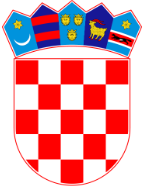Twinning je jedan od glavnih alata Europske unije za administrativnu suradnju između tijela javne uprave države korisnice i tijela javne uprave države članice EU.
Osnovna svrha Twinning projekata je pružanje pomoći i prenošenje znanja u primjeni i provedbi pravne stečevine EU, pri čemu su dionici ponajprije tijela državne i javne uprave koja kroz administrativnu suradnju ostvaruju unaprijed određene ciljeve i rezultate.
Obzirom da uključuje neposrednu suradnju sličnih institucija, Twinning omogućuje stvaranje dodane vrijednosti u javnom sektoru koja se ne može očekivati od druge vrste projekata.

Pokrenut u svibnju 1998. godine, Twinning je u početku bio prvenstveno umjeren na države pristupnice, kandidatkinje ili potencijalne kandidatkinje koje su se pripremale za članstvo u EU i koje su kroz Twinning dobile podršku u provedbi reformi, usklađivanju zakona i propisa s pravnom stečevinom EU te prilagodbi i jačanju javnih institucija.
Od 2004. godine Twinning je prisutan i u državama korisnicama u istočnom i južnom susjedstvu EU koje su obuhvaćene partnerskim sporazumom u cilju aproksimacije njihovog zakonodavstva pravnoj stečevini EU te jačanju administrativnih kapaciteta njihovih javnih institucija.
Sredstva za provedbu twinning projekata osigurava EU, a projekti se financiraju kroz dva osnovna instrumenta: IPA (države kandidatkinje i potencijalne kandidatkinje) i ENP (države u okviru Europske politike susjedstva).
IPA

- Albanija
- Bosna i Hercegovina
- Crna Gora
- Kosovo*
- Sjeverna Makedonija
- Srbija
- Turska
ENP

- Alžir
- Armenija
- Azerbajdžan
- Egipat
- Gruzija
- Izrael
- Jordan
- Libanon
- Maroko
- Moldova
- Tunis
- Ukrajina
- Palestina**
Dodatne informacije:
http://ec.europa.eu/enlargement/tenders/twinning/index_en.htm
http://www.mvep.hr/hr/posebni-projekti/


